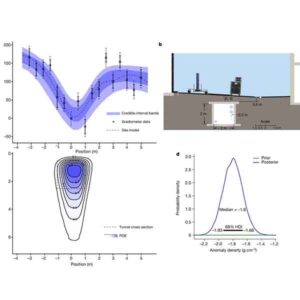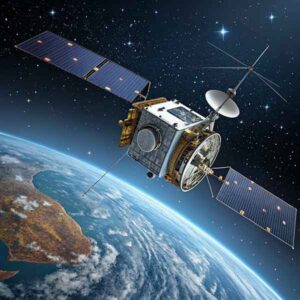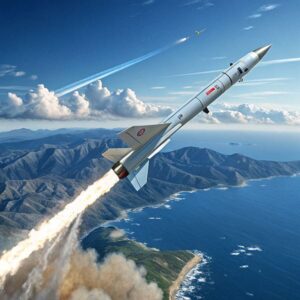A New Weapon for Detecting Underground Space—Quantum-Sensing Based Ultracold Atom Gravity Gradiometer
Introduction: Challenges and Opportunities in Underground Space Exploration
In the field of scientific exploration, astronomy and geophysics have long held a pivotal role. With the advancement of astronomical observation technology, we are now able to collect electromagnetic and gravitational signals from distant galaxies, revealing the mysteries of the universe. Current exploration distances have reached the billion-kilometer scale. However, compared to the vastness of space, human understanding of the underground world is still quite limited. The deepest underground activity humans have conducted is the oil well on Russia's Sakhalin Island, which reaches depths of several kilometers. Even the underground layers just a few meters beneath our feet remain largely unexplored.
While geophysical exploration techniques, such as seismology, magnetometry, and gravity measurements, have advanced, drilling remains the most effective method for understanding underground structures. In recent years, quantum sensors have emerged as a viable alternative to traditional geophysical sensors, drawing increasing attention for their superior detection capabilities, particularly in underground space exploration.
The Breakthrough of Quantum Sensors: Ultracold Atom Gravity Gradiometer
The Principle of Quantum Sensing
A team led by Stray at the University of Birmingham has recently developed an ultracold atom gravity gradiometer based on quantum sensing technology. This instrument utilizes atomic interference techniques to measure local gravitational acceleration by observing how gravity affects a freely falling atomic cloud. Specifically, the instrument uses light pulses to separate and recombine atomic clouds, generating a matter wave effect. The interference pattern of the matter waves is then linked to the local gravitational field. This quantum interference-based measurement can achieve remarkable precision, but is subject to noise interference.
To overcome this challenge, Stray's team proposed an innovative design that measures the gradient of the gravitational field rather than the absolute gravitational value. By measuring gravitational gradients through differential measurements, the instrument effectively reduces the impact of noise, thus improving measurement accuracy. This approach represents a significant step forward in making quantum gravity gradiometers more applicable in real-world scenarios.
Design and Performance of the Atomic Gravity Gradiometer
Since Kasevich and Chu first proposed the concept of a gravity gradiometer over 30 years ago, the performance of such instruments has steadily improved with advancing technology. Current research focuses on making the instruments more portable and reliable for field measurements. Stray's quantum sensing atomic gravity gradiometer has made a significant breakthrough in this regard.
The instrument adopts an hourglass structure, using two ultracold rubidium atomic clouds with a vertical separation of one meter for differential measurements. This configuration results in compact yet robust optical components that can maintain measurement precision for months. The experimental results show that the instrument can detect the distribution of underground cavities through tiny gravitational changes, achieving remarkable sensitivity.
Exceptional Measurement Precision and Sensitivity
Stray's team demonstrated that the gravity gradiometer achieves a sensitivity of 20E (1E = (10^{-9} \, \text{m/s}^2)) and can perform efficient measurements in just 10 minutes. Moreover, thanks to the intrinsic stability of quantum sensors, the instrument maintains excellent performance even in the presence of environmental disturbances such as tilting and ground vibrations. This feature gives the instrument a clear advantage over traditional gravity meters.
Practical Applications of the Quantum Gravity Gradiometer
Stray's research suggests that this quantum sensor can collect 10 data points within just 15 minutes, with uncertainties lower than those of current commercial gravity meters. More importantly, the instrument is well-suited for field measurements, and it is expected to greatly advance underground exploration technology, particularly in mineral exploration, underground cavity detection, and other areas.
The instrument's broad application potential lies in its ability to measure changes in gravitational gradients, precisely locating underground structures such as tunnels and mineral deposits. Furthermore, with its superior spatial resolution and measurement accuracy, the ultracold atom gravity gradiometer has significant potential for precise exploration.
Future Prospects: The Wide Application of Quantum Sensors
As quantum sensing technology continues to evolve, future gravity gradiometers will not be confined to laboratory-based precision measurements. Stray's research has laid the groundwork for the real-world application of quantum sensors. In the near future, these quantum devices are expected to be miniaturized and more portable, making them widely applicable in various underground detection tasks, including mineral exploration, groundwater resource surveys, oil and gas exploration, and disaster early warning systems.
The Advantages of Quantum Sensors
The greatest advantage of quantum sensors lies in their high sensitivity and long-term stability. Unlike traditional gravity meters, quantum sensors do not rely on mechanical components, significantly reducing errors caused by mechanical vibrations, temperature fluctuations, and other factors. Their high precision and reliability make them suitable for use in field environments.
The Future of Miniaturization and Portability
In the future, with the continued development of quantum technology, ultracold atom gravity gradiometers will become smaller and more portable. This not only means that the size and weight of the devices will decrease significantly, but also that they will play an increasingly important role in various fields, advancing underground space exploration technology.
Conclusion
The application of quantum sensing technology is transforming our understanding of the underground world. The ultracold atom gravity gradiometer, with its unprecedented precision and sensitivity, opens up new possibilities for underground exploration. As technology continues to mature, quantum sensors will become an essential tool for underground exploration, offering more efficient and accurate solutions for the study of Earth's internal structure. In the coming years, these advanced sensors will provide us with deeper insights into underground space, propelling the development of fields such as geology, mining, engineering, and more.





